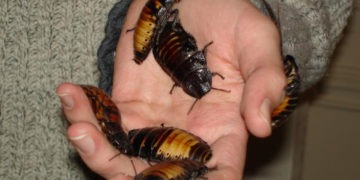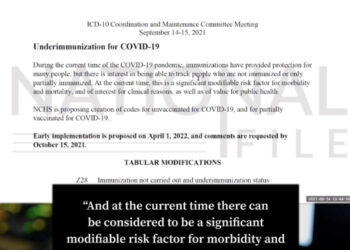Last Updated on October 28, 2019
Unless you’ve been living under a rock, you would’ve at least seen some mainstream publication promote entomophagy–bug eating–in some form to either save the environment or resolve issues that may arise from overpopulation in third world countries.
Many articles often mask the relatively taboo practice of entomophagy by sprucing up the idea with supposedly tantalizing recipes employing a wide variety of nutritious bugs.
However, the idea of entomophagy, on the whole, has not been well received.
Behind The Media’s Obsession With Eating Bugs — And Cannibalism
An internet meme circulating the dissident right-wing Twitter sphere depicts a soulless future where individuals become faceless economic units living in a cramped pod, munching on bugs, living exclusively for the GDP–as sardine living conditions have, ironically, been promoted as a viable alternative to prevent overcrowding.
CNN has now chimed in with an extensive piece on the benefits–social, health, and culinary–of entomophagy, titled “The food that can feed, and maybe save, the planet: Bugs”
Bugs may the protein of the future that can help save the planet https://t.co/WVy3Zwvh4Z
— CNN (@CNN) October 25, 2019
The tweet was initially ‘ratioed’ with many social media users posting memes projecting their disgust at the prospect of eating bugs.
In the article, the author attempts to convince the reader of the fact that the average person unintentionally, unconsciously, eats bugs on a daily basis:
The US Food and Drug Administration allows 30 or more insect parts and some rodent hair in every bar of chocolate; nearly two maggots in a 16 ounce can of tomatoes or pizza sauce; and up to 450 insect parts and nine rodent hairs in every 16 ounce box of spaghetti.There’s just no way to get rid of all the creatures that might hitch a ride along the food processing chain, so the FDA has to allow what they call “food defects,” which you eat without knowing. They are in many of our foods — even peanut butter and jelly.
Queen termites, for example, are so nutritionally dense that they are fed to undernourished children in Uganda and Zambia.Consider those mealworms you had instead of bacon at our imaginary breakfast. They have higher unsaturated omega-3 levels than fish, as well as the same protein, vitamin and mineral content.The cricket protein in the toast you hypothetically enjoyed is said to be a “complete protein” just like fish, meat, dairy and eggs. Complete proteins contain all nine essential amino acids needed to build and repair protein tissues in the body. We don’t naturally make those essential amino acids, so we must get them through our diet.





















